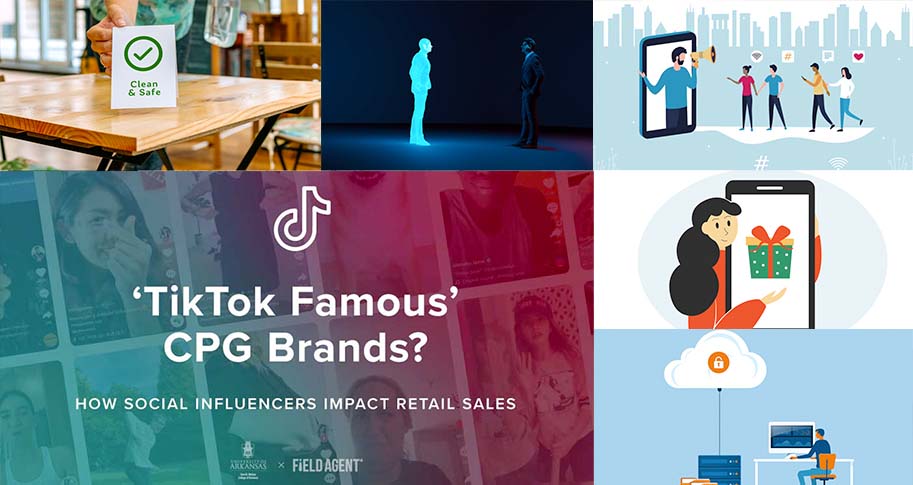
Note: This article is the first in a series of ICYMI articles reprising some of our most insightful research of the year to date.
It's decision time for the consumer.
There on the shelf in a store sits a product. Next to it, more products.
Products. Products. Products.
And now the time has come: To buy, or not to buy? And if the decision is to buy, then which product is the one worth buying?
In short: How will the consumer behave? And why?
Understanding consumer behavior is a key component of business success, and it doesn’t matter if the consumers are shopping online or in a store or if they are hunting for a product, a service, or a combination of both. So it pays to seek good information and heed good advice when it comes to consumer behavior.
Walton Insights is full of such information and such advice.
In case you missed it, articles over the last six months have covered such topics as the factors that determine whether consumers will preorder products, the ethical implications of AI’s influence on consumers, how to create overlap between the identity of consumers and a brand’s identity, consumers’ perceptions of privacy and security policies, effective messaging approaches for reaching consumers, and the influence of TikTok on shoppers’ decisions.
Here are some highlights.
How Consumers Decide if They Will Preorder Products
It’s no surprise that consumers prefer immediate consumption. Brian May, guitarist for Queen, spoke for most of us when he wrote, “I want it all and I want it now.” But researchers have found that monetary discounts and free gifts typically reduce the angst associated with waiting on something that’s been preordered.
They also have found differences between utilitarian and so-called hedonistic products. For instance, consumers are more willing to preorder hedonistic products – luxury products with strong emotional or experiential expectations – because they can fill the wait time by imagining what it will be like to have the coveted product.
This Walton Insights article provides a more complete review of Burton, Mukherjee, and Smith’s findings.
The Ethical Implications of Ai’s Influence on Consumers
If you think your digital assistant is displaying a unique personality and expressing emotions and behavior quirks, that’s because it’s been programmed that way. But recent research raises concerns that such uses of technology are outpacing ethics and that “human-like designs” might ultimately produce negative consequences for consumers.
The authors of this Walton Insights article lay out the reasons for the concerns and offer these three suggestions for protecting our humanness:
1. Machines should carry a warning that tells consumers that no digital companion should ever “be a substitute for healthy human relationships.”
2. Consumers should be warned that “the long-term impact of living with computers that express feelings they can’t have is unknown.”
3. A machine should “reveal itself in the beginning of every human encounter” and offer the option of turning off its “emotional expressions.” This is particularly important, the authors note, for interactions between machines and children.
Creating Overlap Between a Brand’s Identity and the Identity of Consumers
A merchant’s brand’s identity involves the “characteristics and associations of the retailer that can make it unique in the eyes of the consumer.” The consumer’s self-identity involves “how consumers view themselves,” which is “malleable and varies from situation to situation.” And identity congruence is the “degree of overlap between a consumer’s self-identity and the retailer’s brand identity.”
This Walton Insights article, which summarizes the research efforts of Gonca Soysal and her coauthors, provides five unique approaches retailers can use in the merchandise they offer that will assist them in uniquely defining their brand and five innovative merchandising strategies to help personify the retailer’s brand identity. Then it offers insights on creating identity congruence by using “social touchpoints” (salespeople, social media, blogs, etc.) and technology (online avatars or chatbots, for instance).
The Perceptions of Privacy and Security Policies
If modern business had a diet, the staple food would be data. To get more data, however, businesses often must convince consumers to exchange their privacy and a degree of control for a service.
This article sums up research on how the perceived usefulness of a service and the perceived risks to privacy impact consumers’ willingness to disclose private information that will be stored on a cloud computing service.
Creating Effective Messaging During a Pandemic
The chaos and confusion that came with the pandemic caused communication challenges for all businesses, and this article looks at the approaches that were taken by restaurants. Rybak, Johnson, and Burton examine the roles of three “message orientations” from restaurants to their customers:
1. Firm-centric messaging: Emphasizes the restaurant’s responsibility for protecting customers.
2. Customer-centric messaging: Emphasizes the responsibility customers have for protecting each other.
3. Community-centric messaging: Emphasizes the role of the general public.
If another pandemic or similar disruption occurs, knowing what worked and why may prove to be invaluable for restauranteurs.
The Influence of TikTok on Shoppers
It’s one thing to acknowledge that TikTok is a hugely popular, rapidly growing social media platform, but it’s another thing to know how that translates into sales for a business. So a Walton College marketing research class did a survey to find out if and how TikTok influencers drive shopping behaviors for CPG products.
Since TikTok is mainly popular among the younger generations – don’t worry, old folks will eventually ruin it – the survey stuck with adults ages 20-42 and asked five questions:
1. What social platforms are most popular with young CPG shoppers?
2. What's the general impact of social media on CPG purchases?
3. How common are CPG purchases as a result of TikTok influencers?
4. What are the most common CPG purchases because of TikTok influencers?
5. What makes a good TikTok influencer (for promoting CPG products)?
Read the article, written by Walton undergraduate Keiry Echevierra, for a more detailed review of the response, but it’s worth noting for now that products that clean up – skincare, home cleaning, hygiene – generally cleaned up thanks to TikTok influencers.






